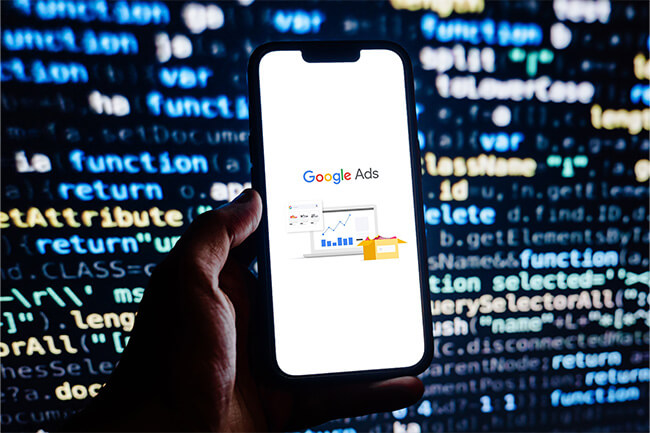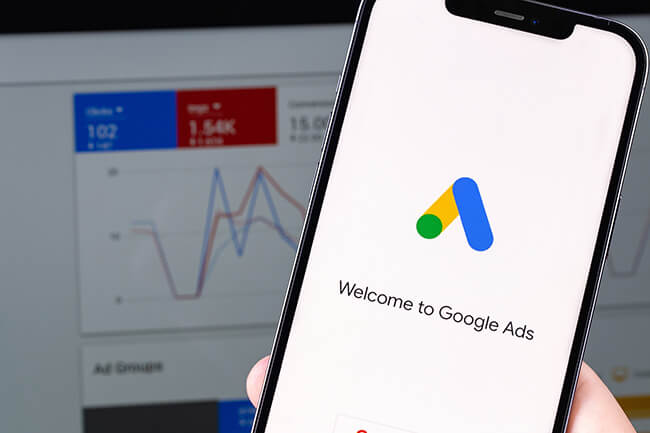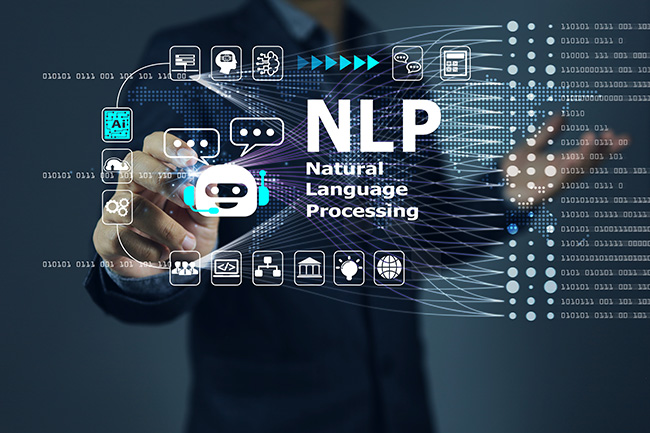Google Ads marketing has changed into a strong place for online ads. It helps businesses find their audience better. Google Ads has changed how people do advertising by using AI and ML together. It allows advertisers to make their ads even better than before.
And the proof that this works?
Well, in 2023, over one million businesses used Google Ads to promote their products and services.
Evolution of Google Ads Technologies
In the past years, Google Ads technologies has changed a lot and improved. It now uses new tech tools to make it better than before. It has changed from using simple keywords to a complex system. This uses AI and ML methods for better targeting of audiences, placing ads wisely, and making things work more effectively. It’s worth speaking to a PPC services agency about developing a strategy for using these technologies to your advantage.
Introduction to Google Ads AI and Machine Learning
Google Ads AI and Machine Learning are more than just popular terms; they’re what will push the future of internet ads forward. These new technologies are leading Google Ads change, giving people a strong set of tools to handle digital marketing’s puzzles.
Advertisers can make better choices with the help of AI and ML. They use these tools to get useful information from data during their campaigns. These algorithms make decisions quickly based on lots of data. They change their plans to get the best results and choose a suitable audience for each campaign, making sure they work really well.
What Are The Benefits of Leveraging AI in Google Ads Campaigns?
Pairing Google Ads with Artificial Intelligence (AI) can make your advertisements better in so many different ways.
Here are some key advantages:
- Automated Bid Management: AI algorithms can analyze vast amounts of data to determine the optimal bid for each ad in real-time.
- Enhanced Targeting: AI allows for more sophisticated audience targeting by analyzing user behavior and preferences.
- Ad Copy Optimization: AI-powered tools can analyze the performance of different ad copies and automatically optimize them for better engagement and conversion rates.
- Dynamic Ad Creation: AI enables the creation of dynamic ads that can automatically customize content based on the user’s behavior, preferences, and demographics.
- Predictive Analytics: AI algorithms can predict trends and patterns in user behavior, allowing advertisers to adjust their strategies proactively.
- Budget Optimization: AI can help optimize budget allocation by analyzing historical data and identifying the most effective channels, times, and audience segments.
- Conversion Rate Optimization: AI tools can analyze user interactions on your website and provide insights into how to optimize landing pages for better conversion rates.
- Automated Testing: AI can facilitate A/B testing and multivariate testing at a faster pace than manual methods.
- Fraud Detection: AI can be employed to detect and prevent click fraud, ensuring that your budget is spent on genuine interactions rather than fraudulent clicks.
- Real-time Insights: AI provides real-time insights into campaign performance, allowing advertisers to make quick and informed decisions.
- Cross-Channel Integration: AI can facilitate seamless integration across various advertising channels, ensuring a cohesive and unified marketing strategy.
The Key Features of Google Ads AI
Some key AI-driven features in Google Ads for campaign optimization include:
Smart Bidding:
Google Ads uses machine learning to optimize bids for conversions, conversion value, or clicks. Smart Bidding has ways like deciding a price for each action, aiming to get the most return on ad money and boosting results.
Responsive Search Ads:
Advertisers provide multiple headlines and descriptions, and Google’s AI dynamically tests different combinations to determine the most effective ad variations based on user engagement.
Dynamic Search Ads:
Google Ads automatically generates headlines and landing page content based on the content of your website. This lets them show ads to people searching for connected words that are up-to-date and useful.
Automated Ad Extensions:
Ad extensions provide additional information in your ads, and Google Ads uses AI to automatically choose and display the most relevant extensions based on user context and behavior.
Targeting Expansion:
AI-driven targeting expansion helps identify additional audiences that are likely to be interested in your products or services. Google Ads can automatically grow your reach while keeping it related.
AI-driven Ad Suggestions:
Google Ads may provide automated ad suggestions based on performance data and industry trends. Advertisers can review and apply these suggestions to improve ad performance.
Performance Insights:
Google Ads provides insights and recommendations based on AI analysis of your campaign performance. This involves giving ideas to change prices, spending plans and focusing efforts in order to make outcomes better.
Conversion Value Prediction:
Google Ads AI predicts the potential value of conversions, allowing advertisers to prioritize and focus on high-value actions or customers.
Bid Adjustments for User Segmentation:
AI helps in analyzing user data to identify patterns and preferences. Advertisers can change their bids for certain groups, gadgets, places or moments as suggested by AI.
Ad Strength Indicator:
Google Ads provides an ad strength indicator that evaluates the effectiveness of your ad components. This includes headlines, descriptions, and ad extensions. The AI-driven indicator suggests improvements for better performance.
Local Campaigns:
Google Ads utilizes AI for Local Campaigns to optimize ad delivery across Google properties, such as Search, Maps, and Display. This is especially helpful for companies that have real places.
How to Optimize Campaigns with Google Ads AI
Making your Google Ads run better with AI means using machine learning tools to make and improve the way you do ads. First of all, start using Smart Bidding tricks like Target CPA and Target ROAS. This lets the AI change bids on its own in real-time based on what you want to get from your campaign.
Use Responsive Search Ads (RSAs) and Dynamic Search Ads (DSAs) so Google’s AI can test and make ads better based on searches. This ensures the right ads are shown to users searching online. Leverage automated ad extensions and targeting expansion to broaden your campaign reach while maintaining precision.
Regularly review and apply AI-generated ad suggestions for adjustments to ad copy, bid amounts, and targeting settings. Utilize performance insights and bid adjustments based on user segmentation, adapting campaigns to specific demographics, devices, locations, or times as recommended by AI.
Additionally, pay attention to the ad strength indicator and explore Local Campaigns if you have physical locations, optimizing ad delivery across Google properties for users near your business locations. Monitor and adjust regularly to capitalize on the continuous learning capabilities of Google Ads AI, ensuring ongoing campaign success.
How to Utilize Machine Learning for Google Ads Campaign
To effectively use machine learning in your Google Ads campaign:
- Set Clear Goals: Define specific campaign objectives to guide machine learning optimization.
- Enable Smart Bidding: Use methods like Target CPA and Target ROAS for making bids in real-time.
- Implement Dynamic Ads: Use Responsive Search Ads and Dynamic Search Ads for testing what works best and keeping things relevant.
- Automate Ad Extensions: Let machine learning choose and display relevant ad extensions for improved visibility.
- Leverage Audience Targeting: Use in-market and custom intent audiences for precision, guided by machine learning insights.
- Review Suggestions Regularly: Apply automated suggestions provided by Google Ads for ongoing optimization.
- Utilize Performance Insights: Analyze machine-generated insights for bid adjustments, budget changes, and targeting optimizations. This also works well for measuring ad campaign success.
- Experiment with Experiments: Test changes using Google Ads’ Experiments feature, guided by machine learning analysis.
- Use Conversion Value Prediction: Focus on high-value actions or customers with machine learning predictions.
- Stay Informed: Stay informed on machine learning and Google Ads changes to change your plan quickly.
Overcoming Challenges in AI-driven Campaigns:
Using AI-powered ads in online marketing has many benefits, but it’s important to understand that certain issues may arise when using AI in digital marketing.
Here’s how to overcome common hurdles:
Data Quality and Integration:
- Challenge: Inaccurate or insufficient data can hinder AI performance.
- Solution: Ensure data quality through regular audits, and integrate data sources to provide a comprehensive view. Use clean, relevant data for training AI models.
Interpreting AI Decisions:
- Challenge: AI decisions might seem like a “black box,” making it challenging to understand the reasoning.
- Solution: Implement explainable AI (XAI) techniques to provide insights into how the AI arrives at decisions. This builds trust.
Cost and Resource Constraints:
- Challenge: AI implementation can be resource-intensive, both in terms of costs and skilled personnel.
- Solution: Start with pilot projects, consider cloud-based AI services, and invest in training teams. With time, as advantages grow, the way we share resources can be changed.
Adapting to Dynamic Environments:
- Challenge: AI models may struggle to adapt to rapidly changing market dynamics.
- Solution: Regularly update and retrain models with fresh data to ensure they remain relevant and effective in dynamic environments.
Privacy and Ethical Concerns:
- Challenge: AI applications often involve handling sensitive user data, raising privacy and ethical concerns.
- Solution: Implement robust privacy measures, adhere to regulations, and communicate transparently about data usage and privacy policies.
Algorithmic Bias:
- Challenge: AI models may inadvertently perpetuate biases present in training data.
- Solution: Regularly audit models for bias, diversify training data, and implement fairness-aware algorithms to mitigate bias.
Integration with Existing Systems:
- Challenge: Integrating AI into existing marketing systems can be complex.
- Solution: Choose AI solutions that offer seamless integration, and work with IT teams to ensure compatibility and smooth implementation.
Limited Understanding of AI:
- Challenge: Stakeholders may lack a deep understanding of AI, leading to skepticism or misaligned expectations.
- Solution: Conduct training sessions to educate teams about AI capabilities, limitations, and potential benefits. Create a learning environment where trying new things is encouraged.
Long-Term Maintenance:
- Challenge: Once implemented, maintaining AI systems over the long term can be challenging.
- Solution: Develop a robust maintenance plan, including regular updates, monitoring, and periodic model retraining.
Cybersecurity Risks:
- Challenge: AI systems may be vulnerable to attacks, posing cybersecurity risks.
- Solution: Implement strong cybersecurity measures, regularly update security protocols, and stay informed about emerging threats.
The Future of Google Ads AI and Machine Learning
Several directions in which Google Ads AI and machine learning may evolve include:
Advanced Automation and Smart Bidding Enhancements:
Expect advancements in automation with more sophisticated Smart Bidding strategies. Google Ads might add new ways to bid and better methods for improving campaigns. This lets advertisers make their ads more accurate.
Increased Integration of Natural Language Processing (NLP):
The integration of NLP could enhance ad targeting and ad copy personalization. Google Ads can use NLP to better know what people want. This helps advertisers make ads that are more related and interesting for users.
Expanded Use of Predictive Analytics:
Google Ads may increasingly leverage predictive analytics to anticipate user behavior and market trends. This could make their predictions better, helping businesses change what they do in ads before problems happen.
Enhanced Cross-Channel Integration:
As AI technologies advance, Google Ads may provide more seamless integration across various advertising channels. This might make advertising better, letting ad creators handle and improve campaigns easier on various platforms.
Increased Emphasis on Privacy and Ethical AI:
With growing concerns about privacy, Google Ads may prioritize the development of AI features that adhere to strict privacy regulations. Further, more work could be put into dealing with biases in AI systems. This would make sure that machine learning is used fairly and ethically for ads.
Key Takeaways:
Google Ads with AI and ML joining, changes how to make campaigns better. It brings information from data smartly and lets computers work in complex ways. People who make ads can gain a lot by using AI’s abilities. They use it to target people exactly, change their bids during the game and keep making better ad messages that fit well for everyone.
It’s important to keep watching, careful checking of data and human supervision are needed. These things are very important to get the most benefits that AI can give on Google Ads campaigns.





Tell us your thoughts in the comments